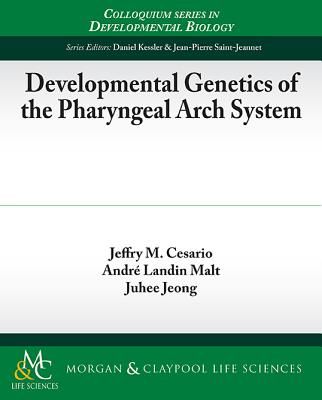You are here
Back to topDevelopmental Genetics of the Pharyngeal Arch System (Paperback)
$50.00
Usually Ships in 1-5 Days
Description
The pharyngeal arches are embryonic structures that develop into the face, neck, a part of the heart, and several endocrine glands in animals. They are thought to have played a key role in vertebrate evolution as their derivatives impact the mode of feeding and breathing. Moreover, perturbation in pharyngeal arch development is associated with several major groups of birth defects in humans. During early embryonic development, cells from all three germ layers come together to assemble the pharyngeal arches. Subsequently, the pharyngeal arches undergo growth, morphogenesis, and cell type differentiation to give rise to musculoskeletal, cardiovascular, neural, and glandular components. These processes are guided by interactions amongst different tissues, via signaling molecules. A large number of genes, with a complex network of regulatory relationships, govern each aspect of pharyngeal arch development. With the advance of molecular genetics tools in model organisms such as mice, we are beginning to understand the molecular and cellular mechanisms underlying development of the pharyngeal arches and related birth defects. This eBook will provide an introduction into development of the pharyngeal arch system, with a detailed discussion on the genetic regulation of this process.
About the Author
Jeffry Cesario, Ph.D., received his B.S. in Biochemistry from Bucknell University in 2003. During this time, he studied the role of viral tegument of the Cytomegalovirus, a type of herpes virus, in the laboratory Dr. Marie Pizzorno-Simpson. He assisted in the analysis of specific viral proteins to determine their importance during infection of certain cell types. Continuing on from this early research experience, Dr. Cesario obtained his Ph.D. in Molecular Genetics and Microbiology from Rutgers University in 2010. For his Ph.D. thesis, he studied the regulation of spindle assembly in mitosis and meiosis using fruit flies as a model system in Dr. Kim McKim's laboratry. His work provided novel insights on the role of a small GTPase Ran during female meiosis. Dr. Cesario then joined the Department of Basic Science and Craniofacial Biology at New York University College of Dentistry as a postdoctoral researcher. In the laboratory of Dr. Juhee Jeong, Dr. Cesario has studied the genetic regulation of mammalian craniofacial development, and the molecular etiology of related birth defects such as cleft palate, tooth agenesis, and craniosynostosis. In particular, he identified a novel genetic pathway downstream of LHX transcription factors that is essential for normal palate development. Dr. Cesario continues his research with Dr. Juhee Jeong, investigating the complex interactions of genetic and environmental factors in the manifestation of craniofacial birth defects.
